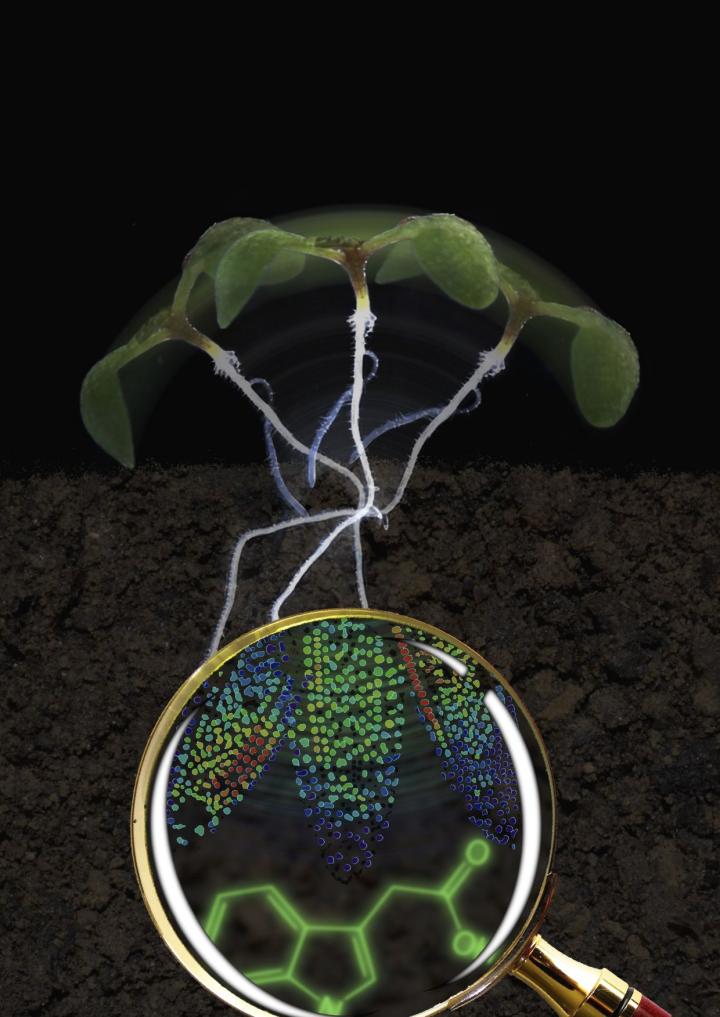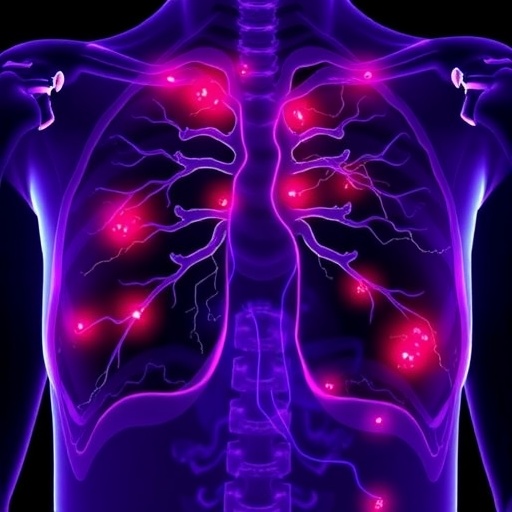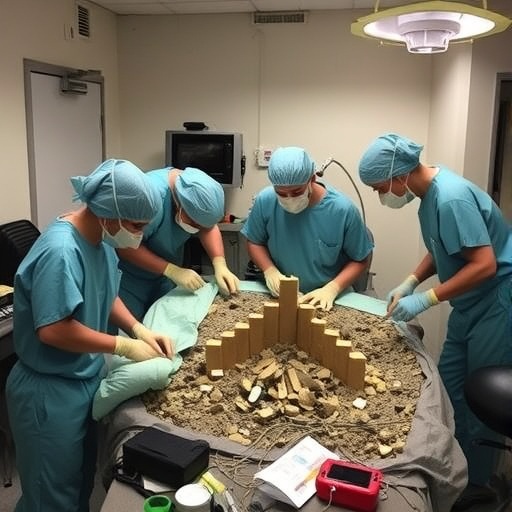Scientists at the University of Bayreuth and the Max Planck Institute for Developmental Biology in Tübingen have developed a novel sensor that provides real-time insights into the inner life of plants

Credit: Graphic: S. Shanmugaratnam, A.C. Stiel, M. Kolb.
The hormone auxin is of central importance for the development of plants. Scientists at the University of Bayreuth and the Max Planck Institute for Developmental Biology in Tübingen have now developed a novel sensor that makes the spatial distribution of auxin in the cells of living plants visible in real time. The sensor opens up completely new insights into the inner workings of plants for researchers. Moreover, the influences of changing environmental conditions on growth can now also be quickly detected. The team presents its research results in the journal Nature.
The effects of the plant hormone auxin were first described scientifically almost 100 years ago. Today we know that auxin controls countless processes in plant cells – be it in the development of the embryo in the seed, the formation of the root system, or the orientation of growth to incident sunlight. In all cases, the hormone has the function of coordinating the plant’s responses to external stimuli. To do this, it must always be present in the cell tissue where the response to an external stimulus needs to be triggered. Indeed, it is often the case that auxin is needed at very different places in the cell tissue within a very short space of time. This leads to rapid spatial redistribution. With the new biosensor, called AuxSen for short, the dynamics of these processes can be observed in real time for the first time. Light signals indicate where the auxin is located in the cell tissue. What is special about this sensor is that it is not a technical device that has to be introduced into the plants, but an artificial protein that the plants are engineered to produce themselves.
The application of the biosensor has already led to some surprising findings. One example is the rapid redistribution of auxin when a plant is turned upside down. When the root tip no longer points downwards but diagonally upwards, the auxin molecules responsible for root growth collect on the new underside of the root tip within just one minute. And upon being placed right-side up, the old distribution of auxin is restored after just one minute.
Protein biochemistry and plant biology in combination
The development of the biosensor is the result of many years of interdisciplinary collaboration. A team led by Prof. Dr. Birte Höcker, Professor of Protein Design at the University of Bayreuth, and a team led by Prof. Dr. Gerd Jürgens at the Max Planck Institute for Developmental Biology, have combined their knowledge and many years of experience. “It is to be expected that the new biosensor will uncover many more unforeseen insights into the inner workings of plants and their reaction to external stimuli over the coming years. The development of the sensor has been a long process in which we have gained fundamental insights into how proteins can be selectively altered to bind specific small molecules,” says Prof. Dr. Birte Höcker.
“There is already a great deal of interest in the new sensor, and it is to be expected that optimised variants of AuxSen will be developed over the next few years to enable even better analysis of the diverse auxin-regulated processes in plants. With our new publication in Nature, we wish to encourage the scientific community to increase research in this direction. Our results so far are an example of how fruitful interdisciplinary cooperation can be in this field,” explains Prof. Dr. Gerd Jürgens from the Max Planck Institute for Developmental Biology in Tübingen.
Advantages of the biosensor: High signal quality and optimal binding strength to auxin
At the beginning of the biosensor’s development was a protein in the bacterium E. coli, which binds to the amino acid tryptophan, but much more poorly to the chemically-related auxin. This protein was coupled with two proteins that fluoresce when excited with light of a certain wavelength. If these partner proteins come very close to each other, their fluorescence increases considerably. A fluorescence resonance energy transfer (FRET) then occurs. The next step was crucial: the initial protein was to be genetically modified so that it binds better to auxin and less well to tryptophan. At the same time, the FRET effect of the partner molecules should always occur when the protein binds to auxin, and only then. With this goal in mind, about 2,000 variants of the protein were created and tested until finally a molecule was found that fulfilled all requirements. Thus, the biosensor AuxSen was born: strong fluorescent signals indicating where in the cell tissue the vital hormone is located.
Another challenge was to enable plants to produce AuxSen themselves. On the one hand, it had to be ensured that AuxSen would bind to the existing auxin molecules in as many cells as possible. This was the only way to map the spatial distribution of auxin in the cell completely and to produce high signal quality. On the other hand, however, the auxin molecules were not to be permanently prevented from fulfilling their original tasks in the plant organism because of binding to AuxSen. Nevertheless, the two research teams succeeded in finding a compromise solution. Plants were genetically modified in such a way as to produce a large amount of AuxSen throughout their cell tissue. But this would only happen when stimulated to do so by a special substance – and then only for a short time. In this way, the biosensor provides precise snapshots of auxin distribution in cells without permanently affecting the processes controlled by auxin.
###
Media Contact
Prof. Dr. Birte Höcker
[email protected]
Original Source
http://www.
Related Journal Article
http://dx.




